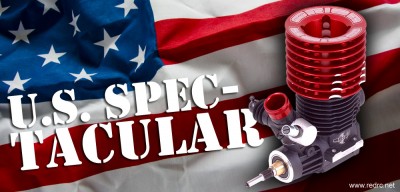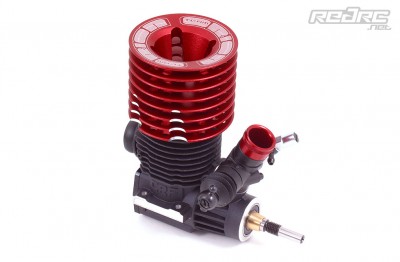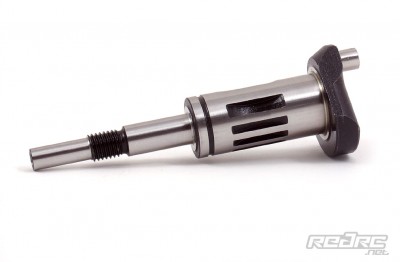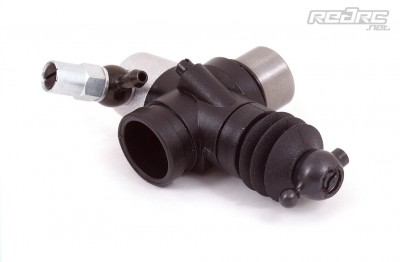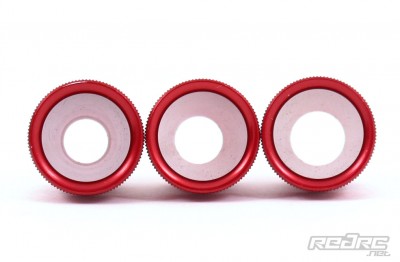U.S. Spectacular – Team Orion CRF 21 Buggy US Spec
Introduced in 2005 the Team Orion CRF engines made some impact on the market with their completely different crankshaft design that was developed by Fabrice Ramella. Hence the name ‘CRF’ (which stands for Concept Ramella Fabrice). The idea behind the CRF technology is to have better control over the mixture that flows from the carburettor through the crankshaft into the combustion chamber.
Usual crankshaft designs sport a gas channel that is level with the crankshaft itself. This causes turbulence that can slow the flow of the mixture down. Secondly the mixture hits the crankcase back plate straight on which can cause a less optimal filling of the crankcase due to a reverse resonance effect. This is prevented by the angled crankshaft window/channel that creates a swirl allowing the mixture to hit the back plate at an angle. This allows the fuel/air mixture to fill the room under the piston more efficiently resulting in a better filled combustion chamber and therefore resulting in more power.
The CRF crankshaft also sports ribs on the opposite side of the crankshaft window that act as a pump when the carburettor opening is closed by the rotation of the crankshaft. These slots/ribs also balance the hardened steel crankshaft for less vibrations and lower its weight for faster and more precise throttle control.
Too powerful?
Originally introduced as on-road engines Team Orion soon expand their CRF range towards the very competitive nitro off-road market with .21 and .28 big block engines for buggies and truggies. The engines soon became synonymous for being powerful but sometimes thirsty motors. Depending on the track they often proofed too powerful and this applied especially to the often tight and technical US tracks where loads of bottom end torque and a precise throttle control is needed ‘thanks’ to the extreme super cross track layouts. That’s where the new CRF 21 US Spec engine kicks in.
A new crankshaft with a smaller crankshaft channel and different timing should make for a better bottom end throttle response, a new carburettor with updated venturi inserts and a new bottom end needle is meant to decrease fuel consumption for better mileage. The carburettor now also has markings for the main and bottom end needle to make adjustments easier and more precise. In theory the changes made to the US Spec engine compared to the v2008 engine should give a better overall performing engine. The funny thing is that Team Orion is one of the first companies to state that a product (read: the CRF 21 Off-Road v2008) might be too powerful. That’s why the US Spec engine was developed.
This does not mean the US Spec is a limp piece of metal. It still feels home on fast and gruelling European tracks as you can adjust the performance by the 6.5 mm to 8 mm venturi inserts. As a rule of thumb: the smaller venturis offer a better mileage with slightly increased low-end torque while the larger ones generate the most power. Depending on you driving style and fuel used the smaller 6.5 mm venturi increases the run-time by 30 to 45 seconds compared to the large 8 mm item. In most cases a leaner mixture is needed with the smaller venturi so make sure to adjust the carburettor accordingly.
